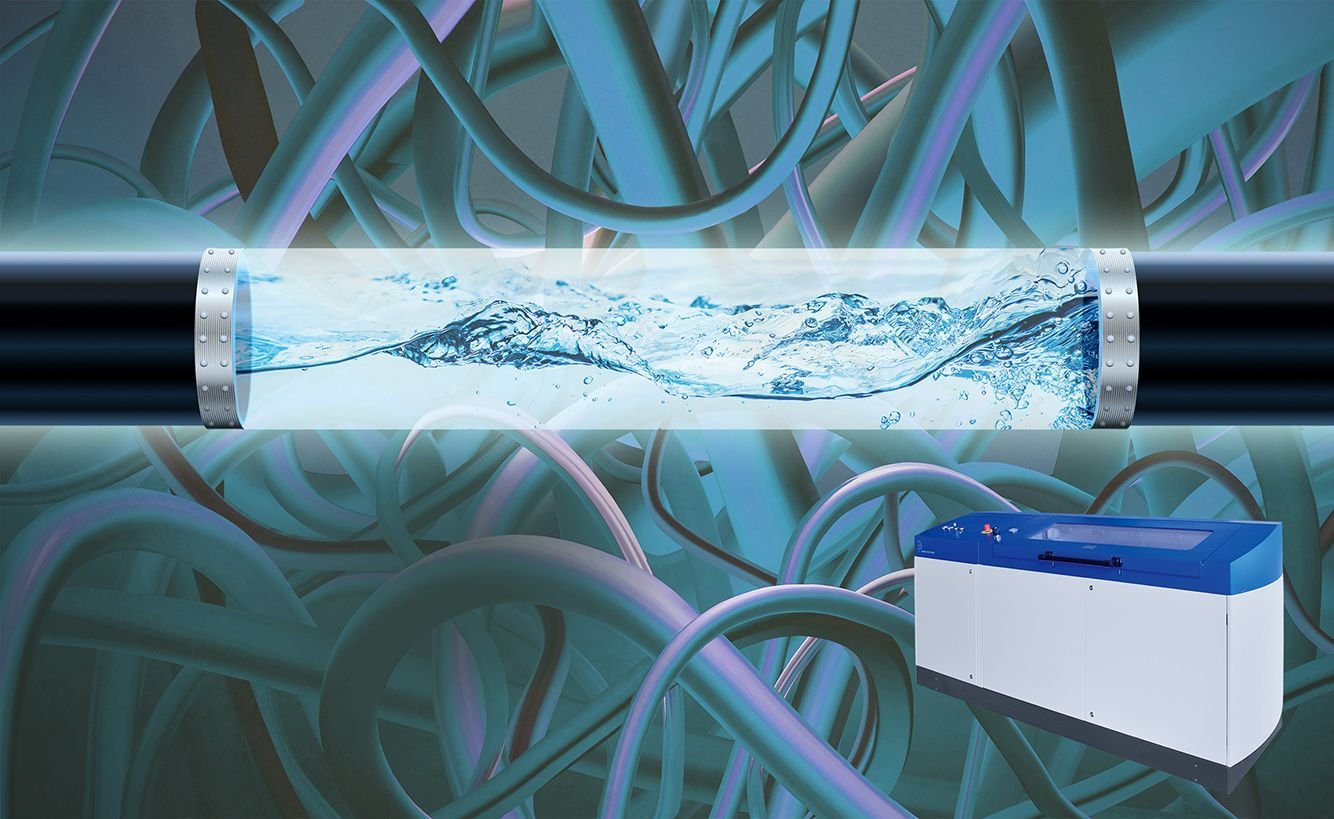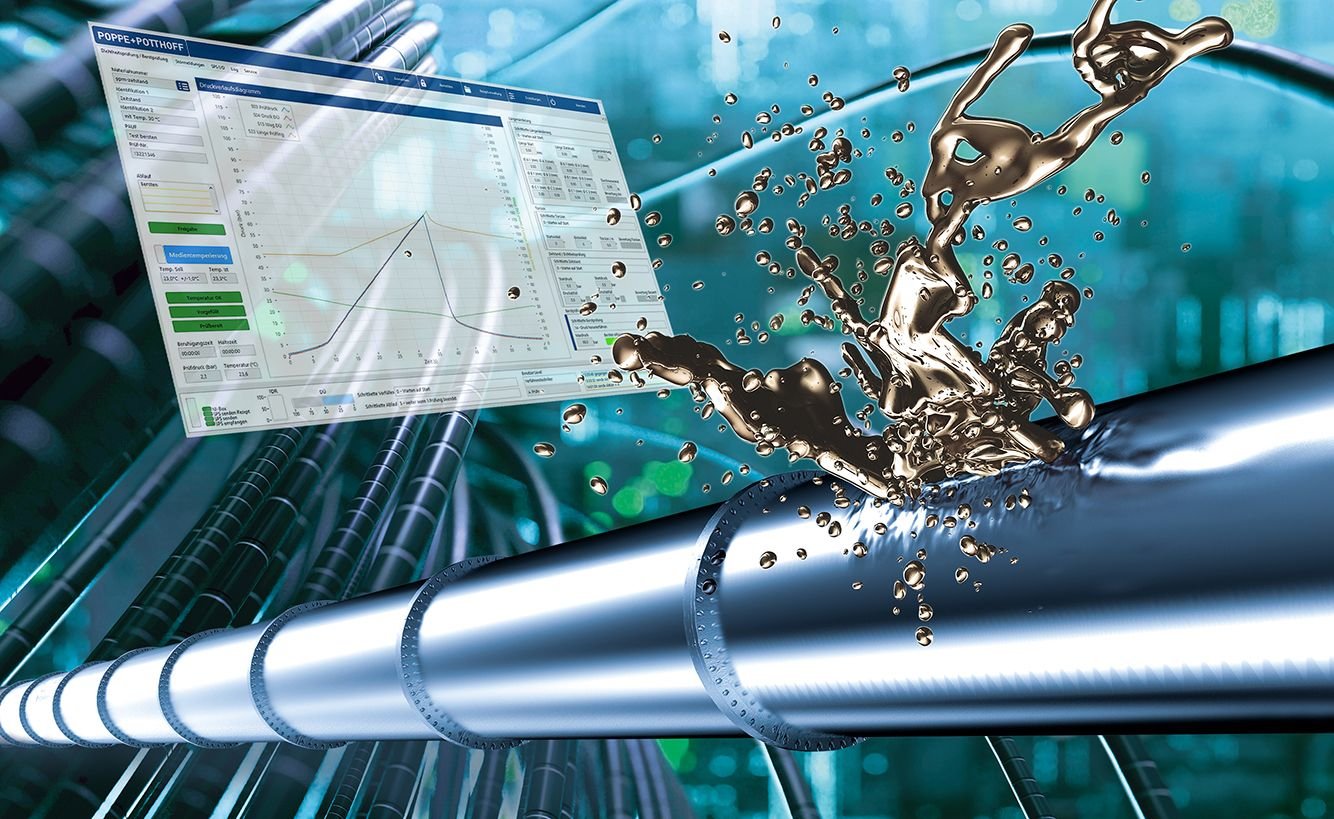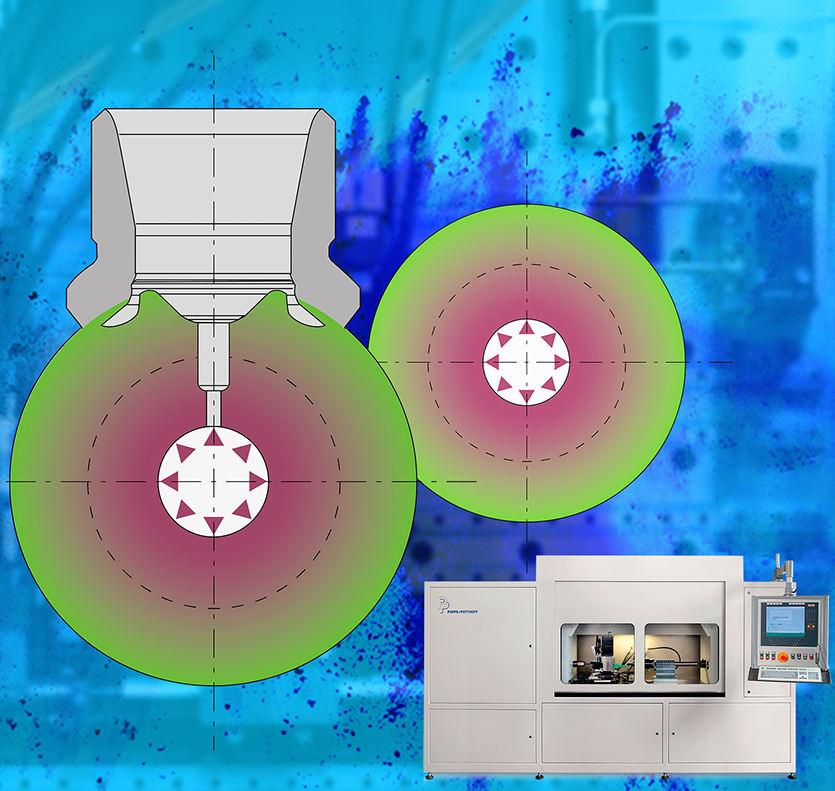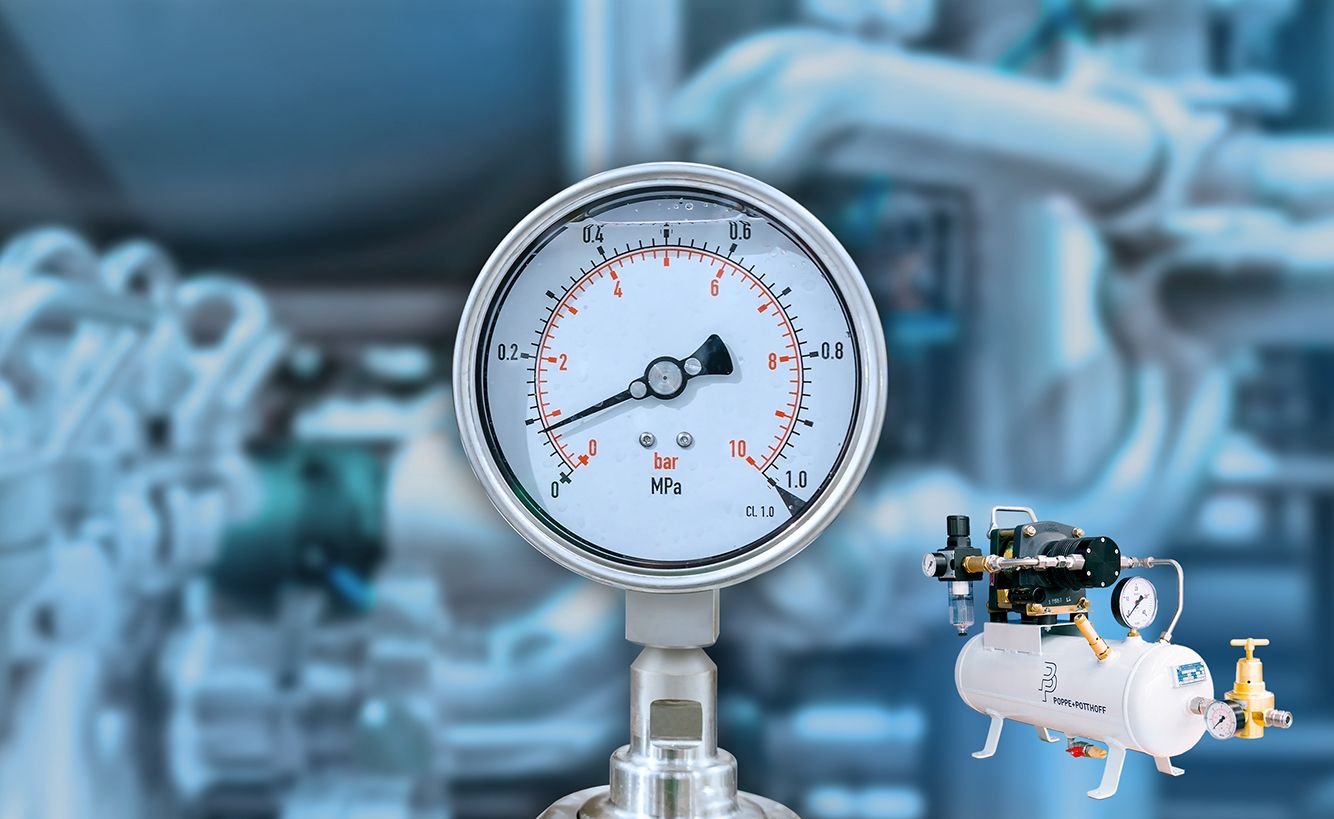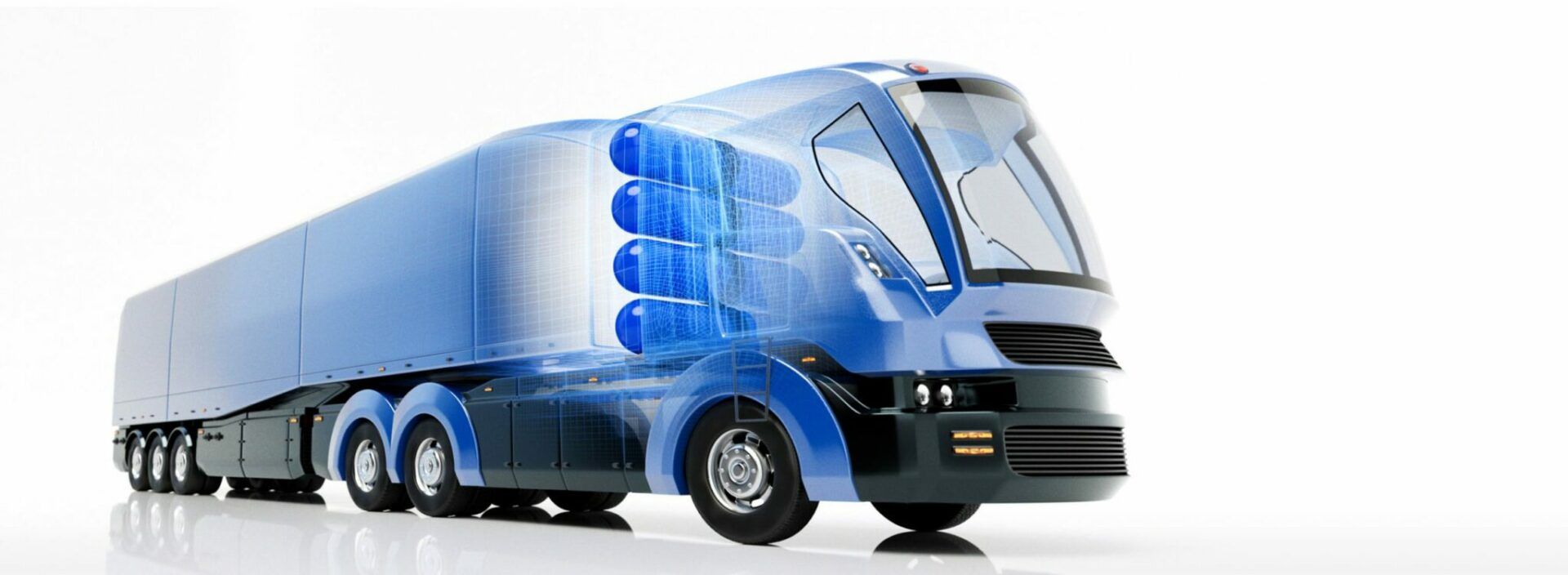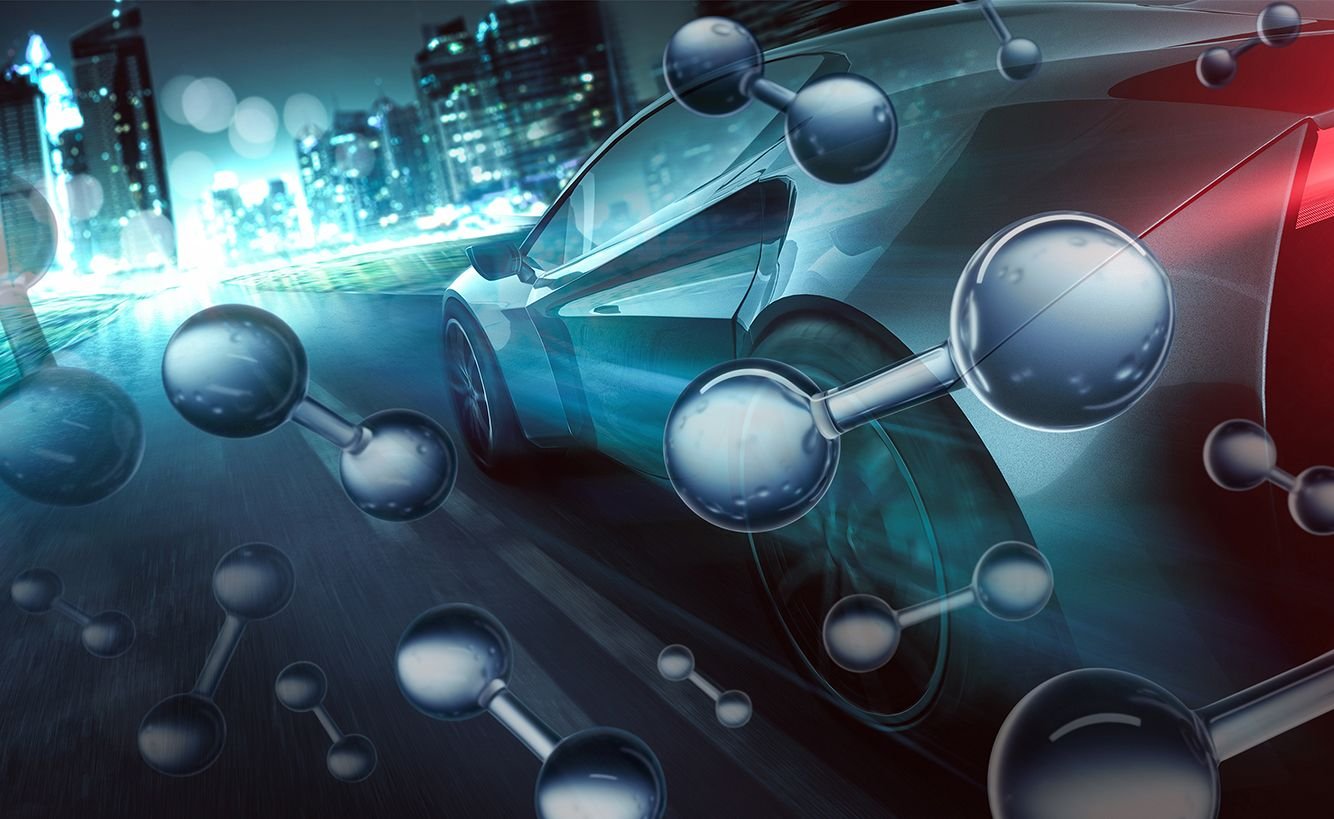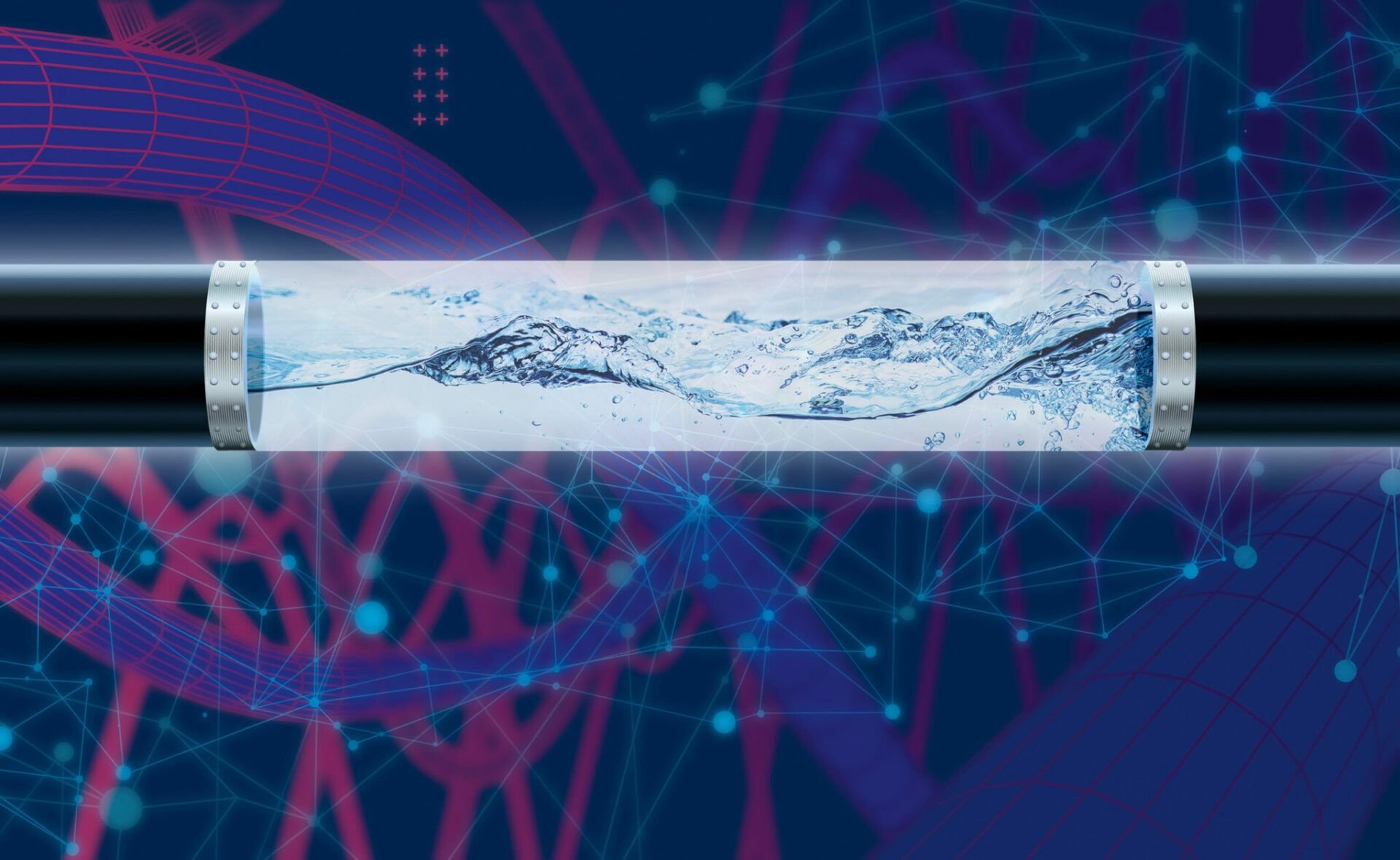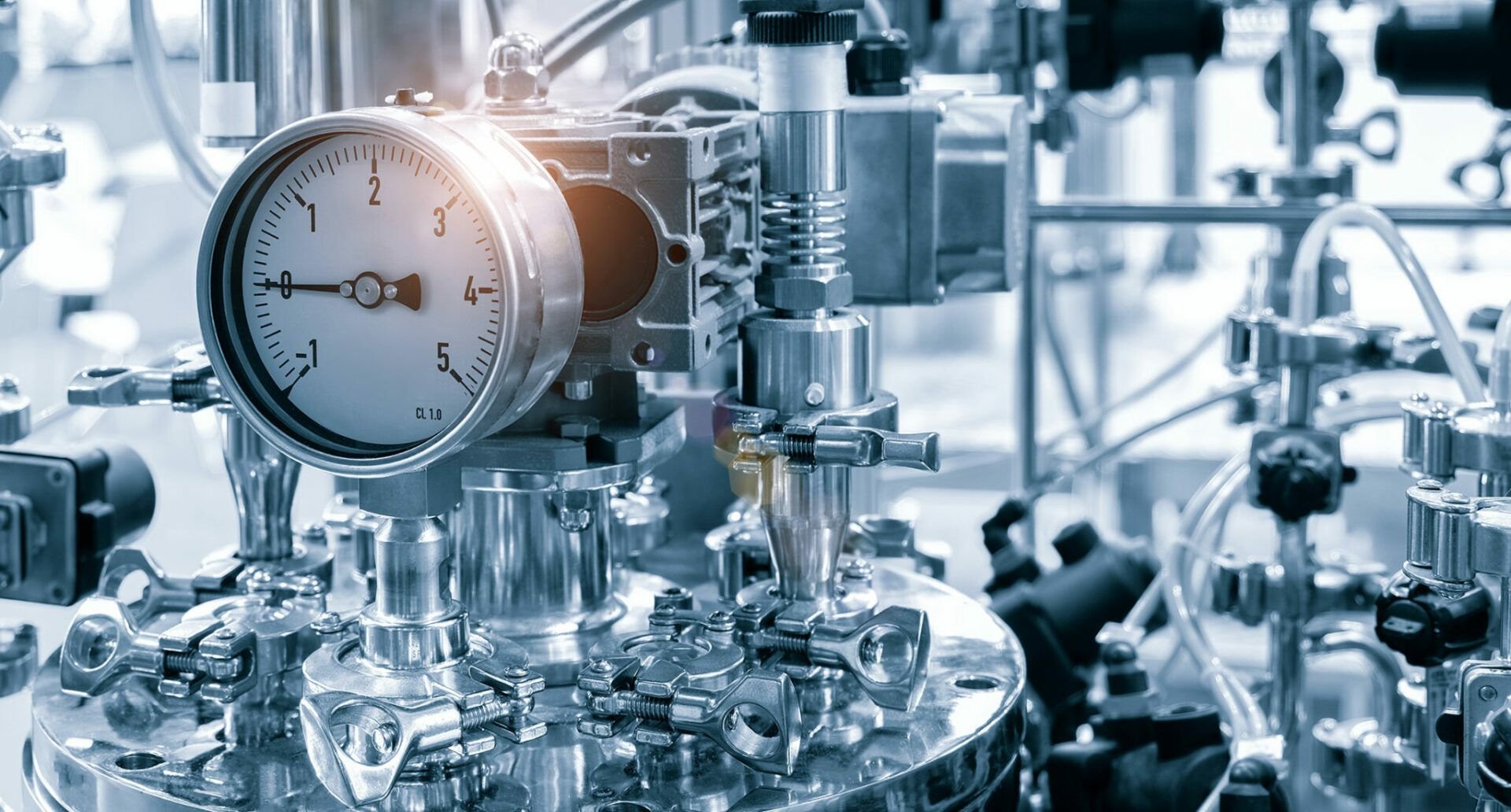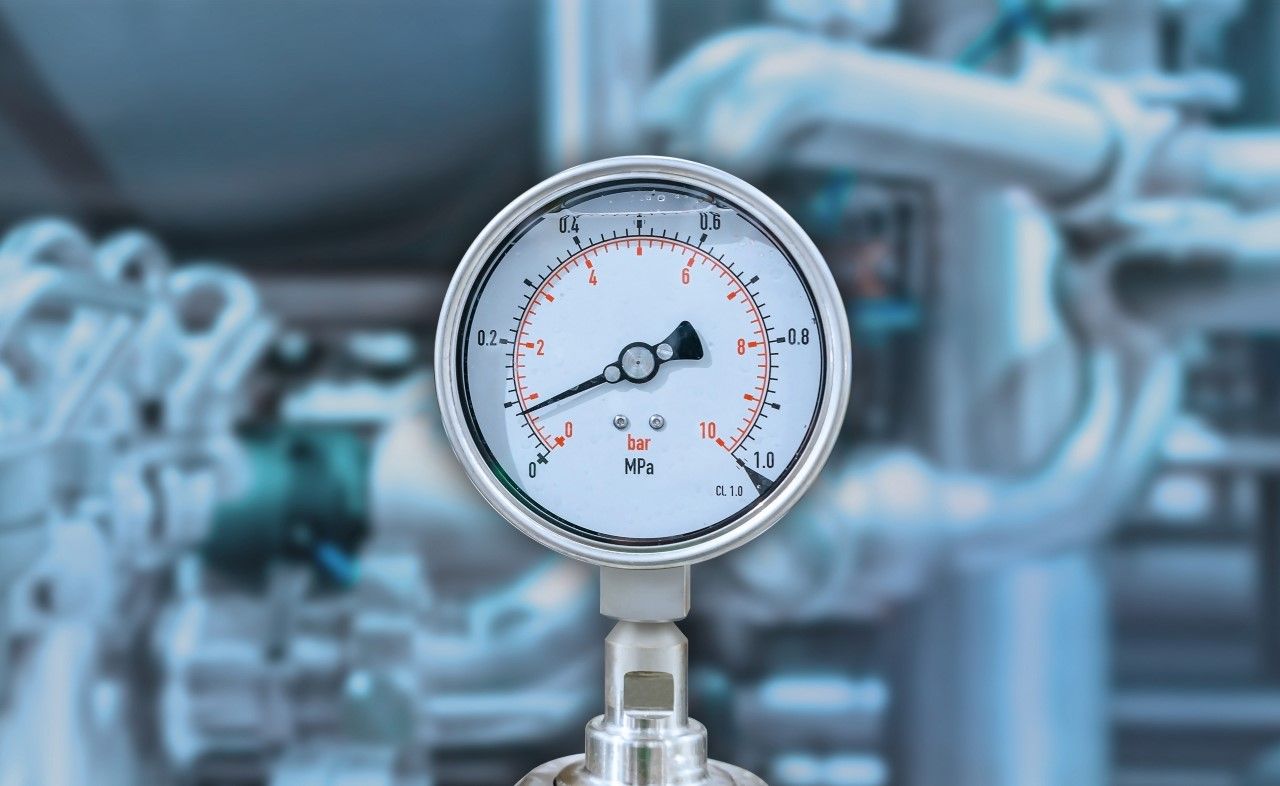
Compressed air booster up to 400 bar. Our compressor units are used wherever the existing system pressure is not sufficient to utilize certain applications. The booster units can be implemented at decentralised positions within an existing infrastructure to increase pressure at certain endpoints.
Compressed Air Boosters
2-Week Free Test Phase
Poppe + Potthoff Maschinenbau GmbH supplies compressor units and pressure control systems of up to 400 bar for various gases. Consequentially, we offer ready-to-connect units to increase the existing pressure for pneumatic and hydraulic applications. In this way, the performance of existing systems can be increased flexibly and efficiently. Our compressor units are used wherever the existing system pressure is insufficient to implement specific applications. Air Amplifiers are suitable for the compression of pressurised air or nitrogen, while our boosters can be used for various kinds of testing and filling, recovery of gases or other functions requiring high pressure.
Compressed Air Booster
Our compressed air booster units are used wherever the existing compressed air supply is no longer sufficient due to an increased pressure requirement for special tools, units or systems. A PPM compressed air booster unit can, for example, be integrated into the existing compressed air network at any desired point via commercially available hose couplings, or can be connected directly to a mobile compressor during assembly work, and thus serves as a point of increased pressure. The pressure booster operates pneumatically, i.e. it operates autonomously and is driven exclusively by compressed air. The pressure compressor shown in the illustration compresses the input pressure at a ratio of 1: 2. Consequently, it is possible, for example, to increase a classic compressed air network from 6 bar point for point to approximately 12 bar. In addition, of course, further conversion ratios and container sizes are also available, depending on the pressure required and the delivery rate.
Performance Data
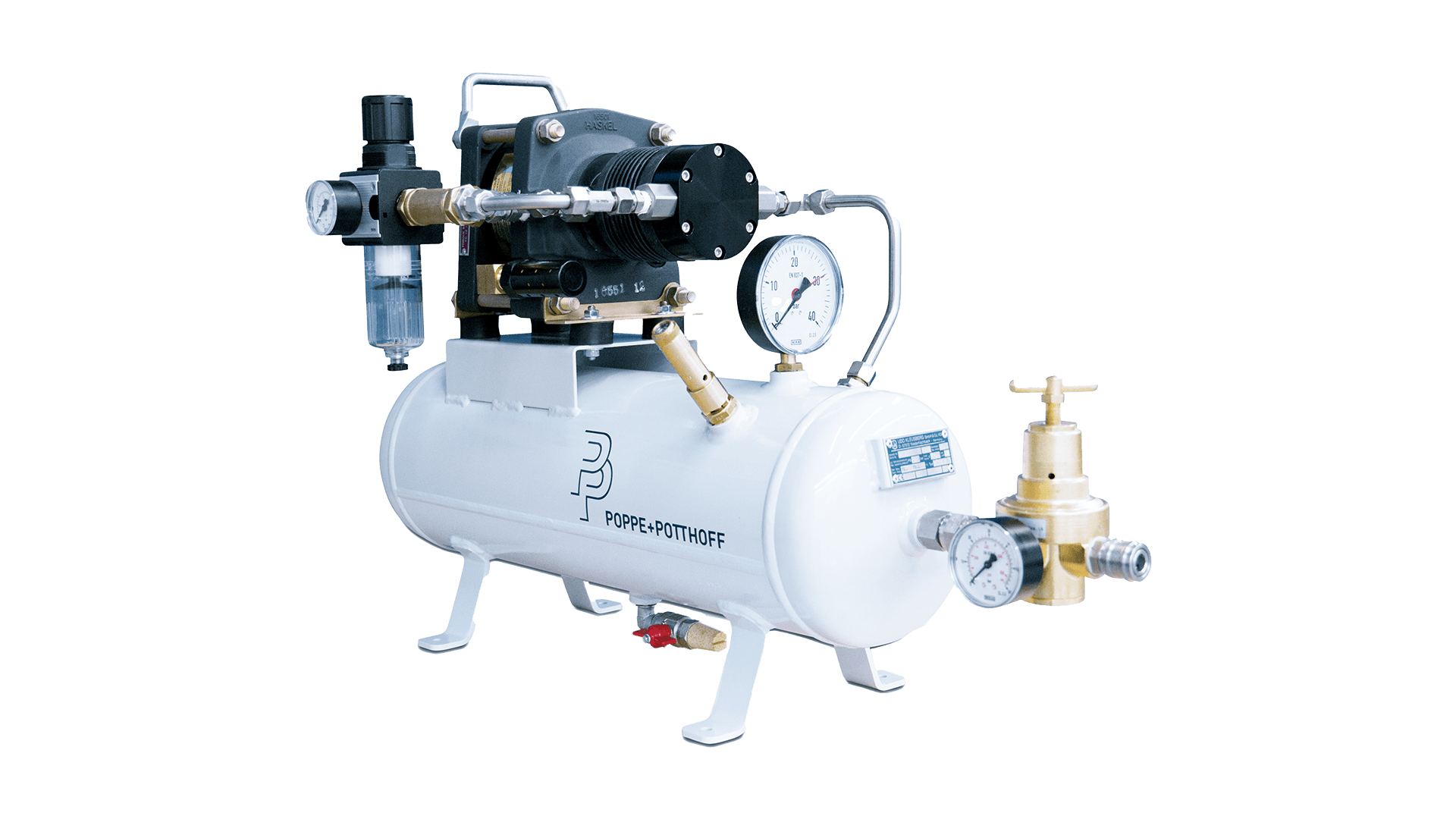
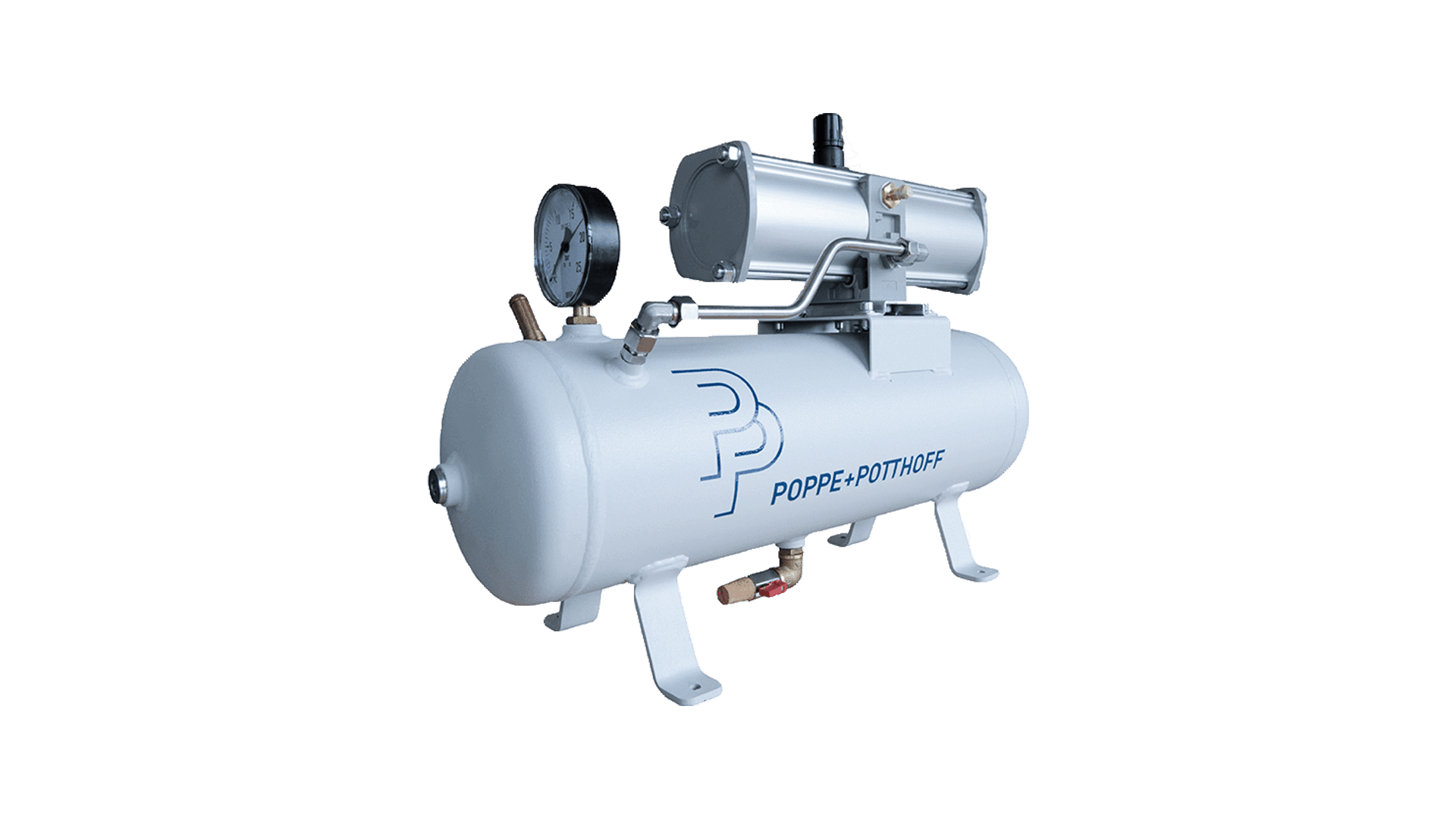
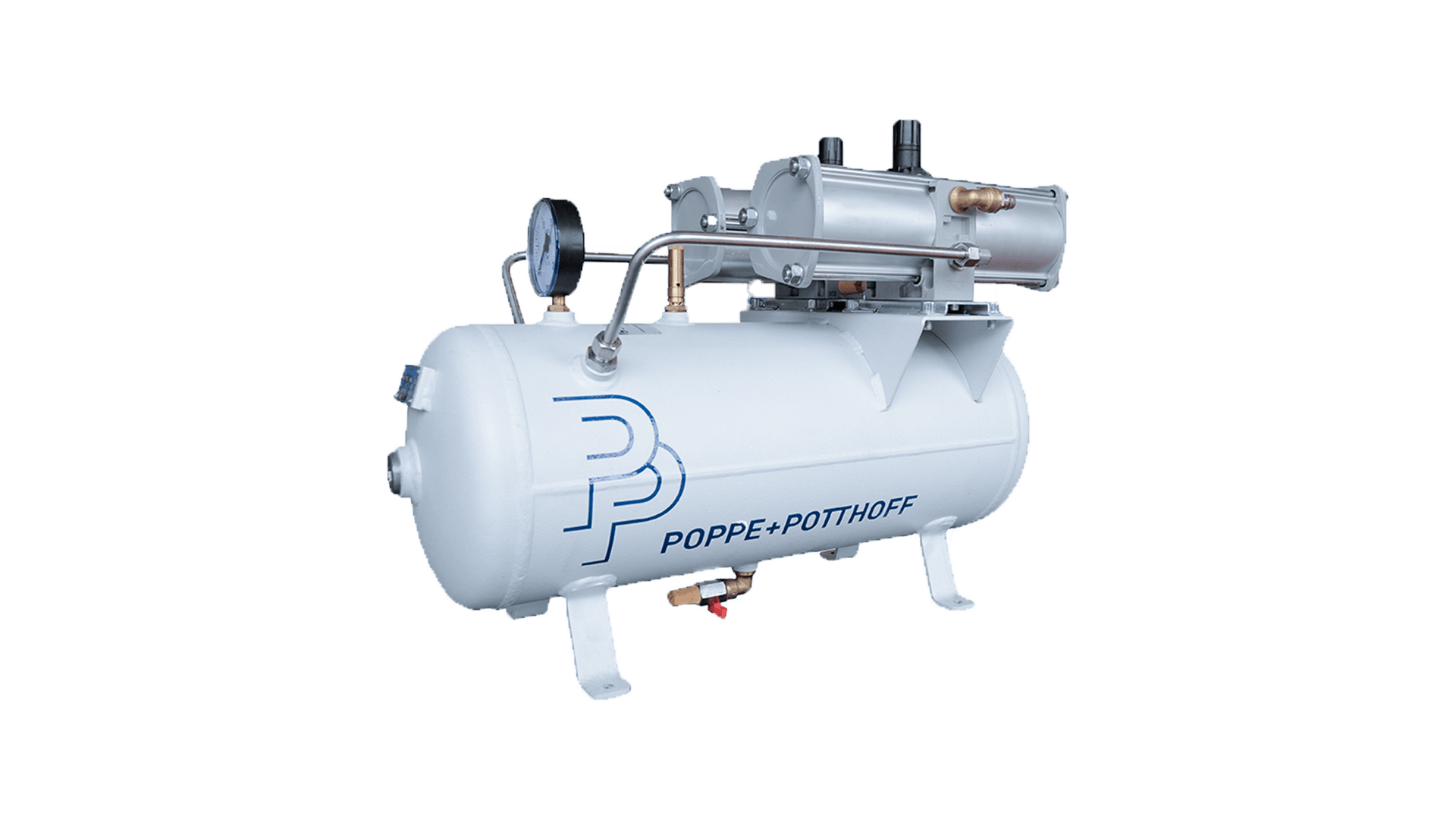
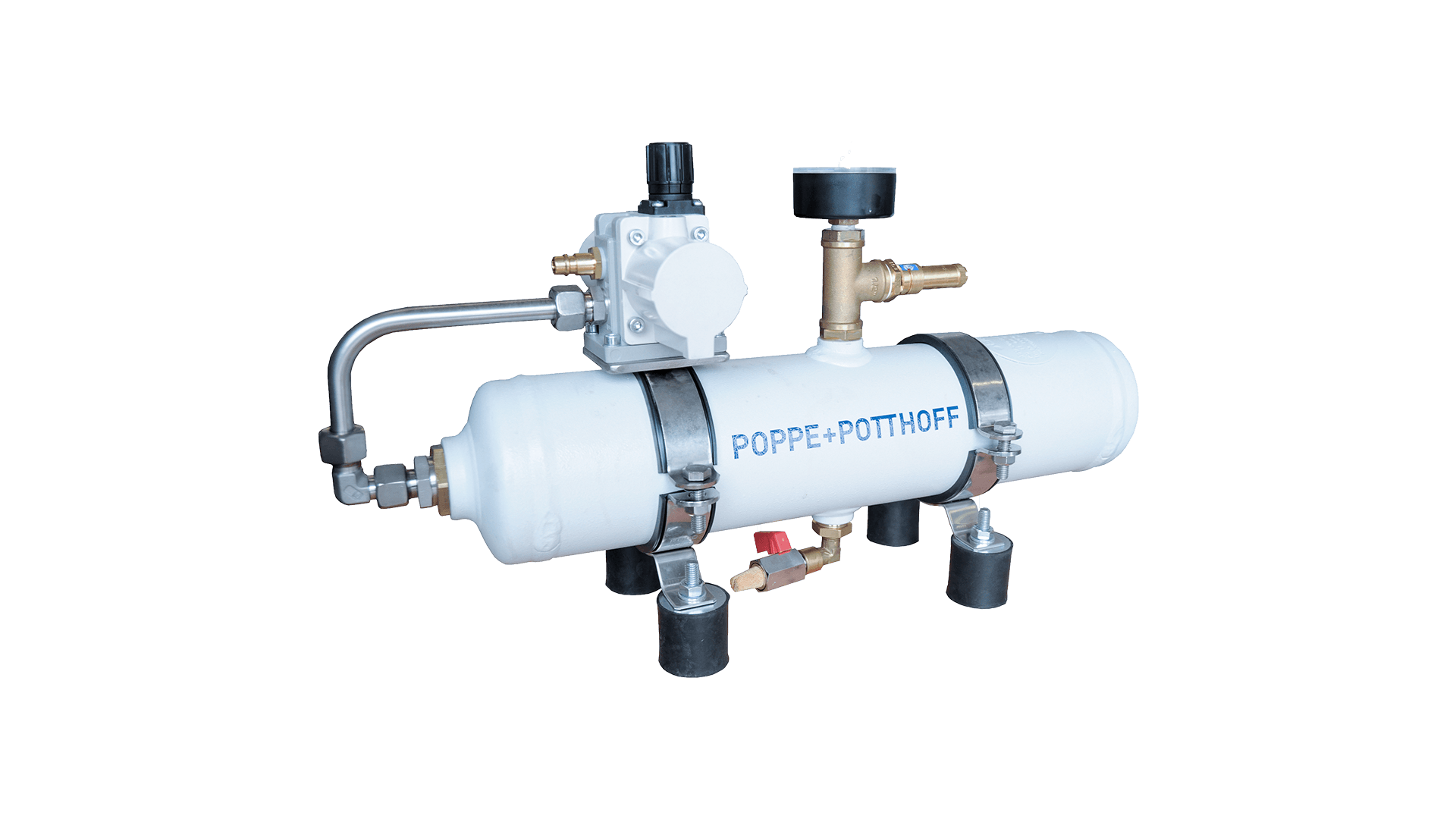
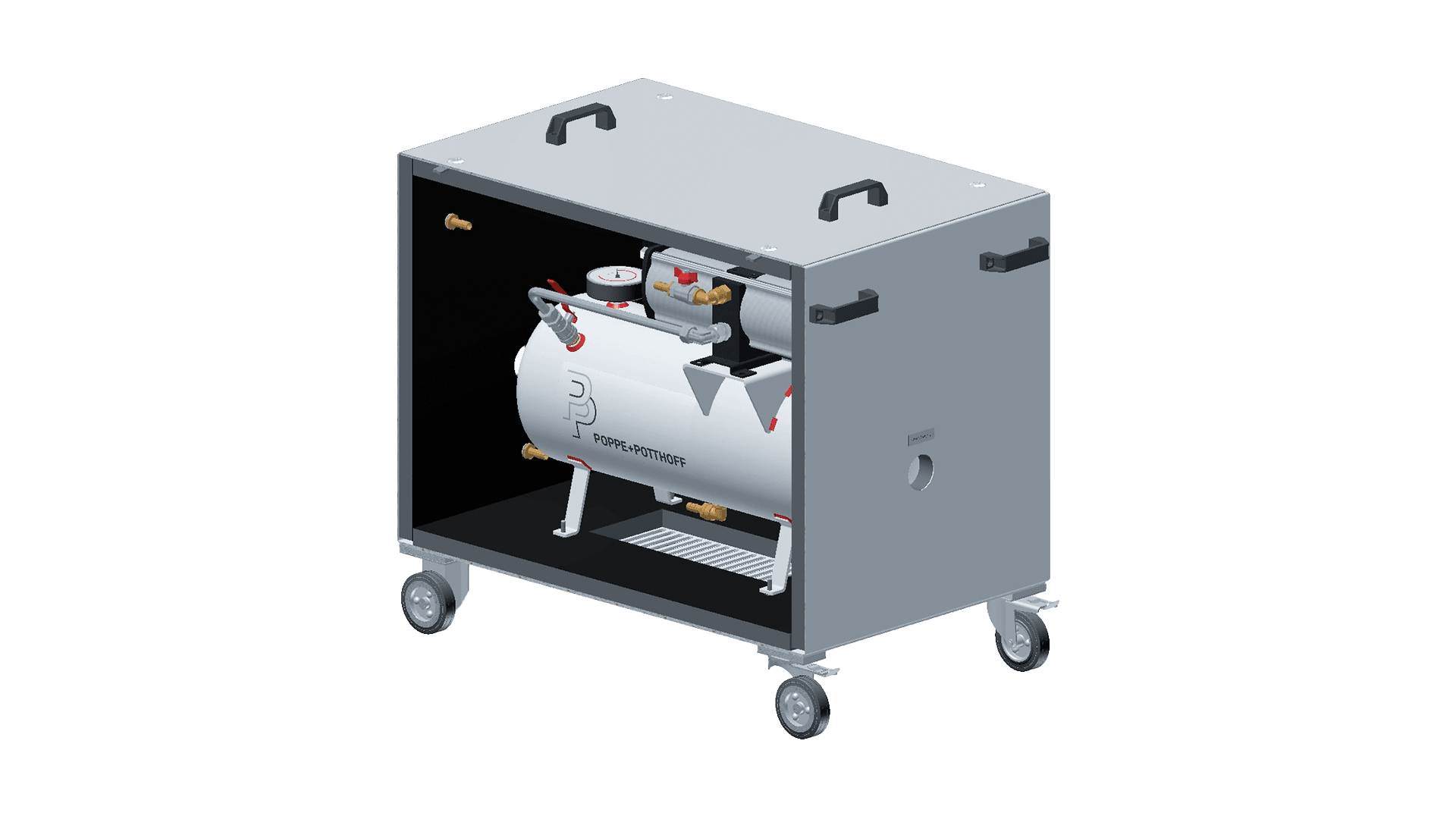
Compressor Unit up to 400 bar
The PPM compressors operate per the pressure conversion principle. The existing operating air is used to compress nitrogen. This principle makes full use of the existing N2 form. The mobile station compresses nitrogen from cylinders to up to 400 bar, regardless of the cylinder pressure.
Compressor type PPM/V/400/120
In this case, a power of approx. 120 Nl/min can be ensured. If the inlet pressure drops below 20 bar, the cylinder must be replaced. Moreover, the production is not affected by cylinder change, since the storage volume of 5 l maintains the necessary supply. The compressor can be operated without problems with a pre-pressure of max. 300 bar.
In the case of a nitrogen supply via a liquid gas tank or a generator, an initial pressure of at least 20-25.
Performance Data

Compressor Unit up to 400 bar
The PPM compressors operate per the pressure conversion principle. The existing operating air is used to compress nitrogen. This principle makes full use of the existing N2 form. The mobile station compresses nitrogen from cylinders to up to 400 bar, regardless of the cylinder pressure.
Compressor type PPM/V/400/400
With this PPM compressor, an output of approx. 400 Nl/min can be ensured. This is the classic application case of an N2 post-compression.
Performance Data

Nitrogen Charging Unit
The PPM nitrogen charger (PPM NCU / HA / 35/400) is intended for filling large storage facilities (bubble, diaphragm and piston storage). It consists of a hydraulic drive unit, a compressor, an electrical control system. and the necessary hoses. The components are installed in a compact, transportable housing. The device operates automatically until the preset pre-filling pressure is reached.
The PPM nitrogen charger allows an optimized utilization of the commercially-available nitrogen cylinders as well as a filling of the accumulators up to a pressure of 400 bar.
Performance Data
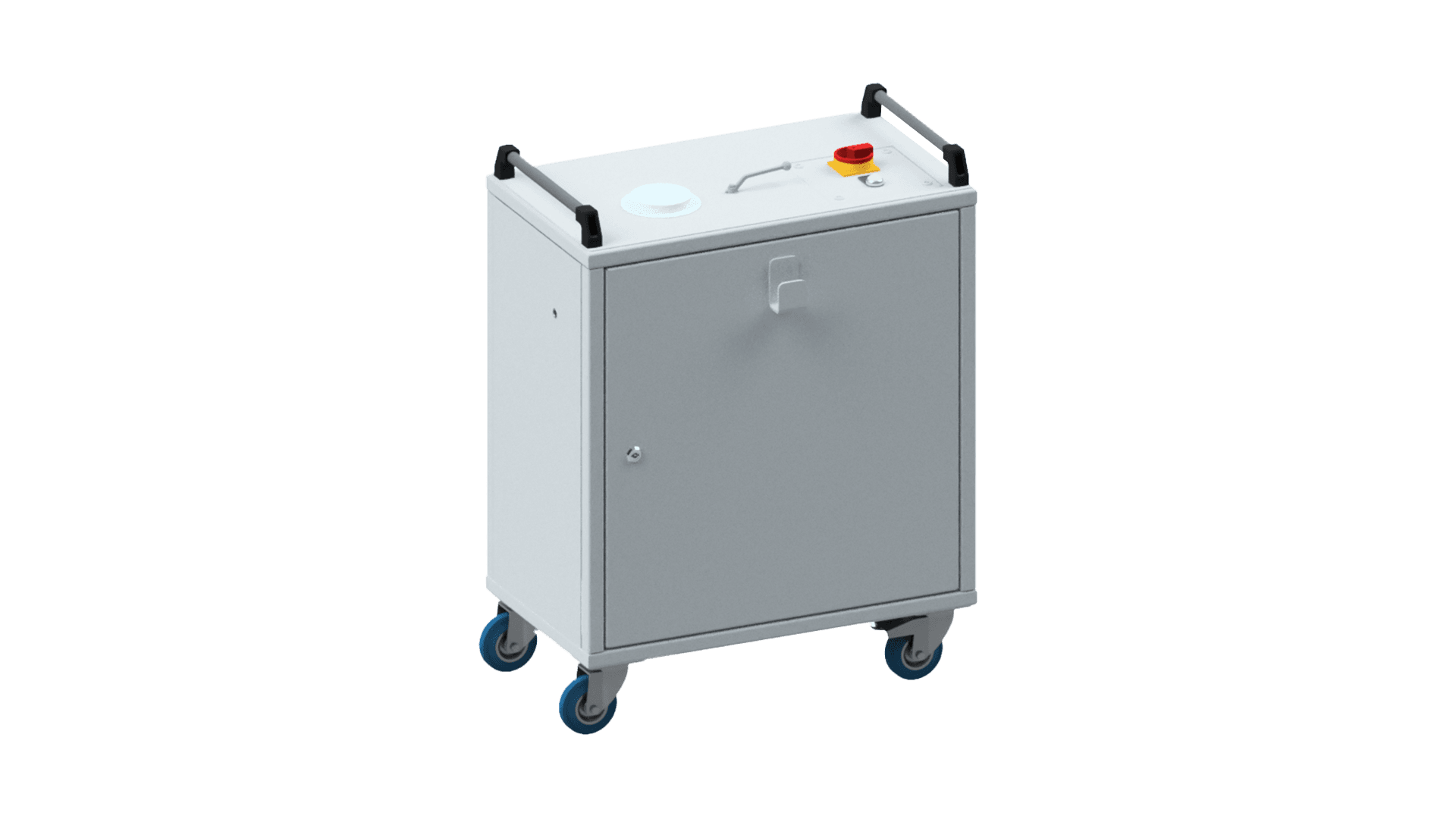
Tie Station for Air & Nitrogen
The PPM tie stations allow better utilization of nitrogen cylinders as well as a filling of the accumulators up to a pressure of 300 bar.
The stations are attached to standard nitrogen cylinders and are available in various designs.
The PPM NCU/N/35/300 is an autonomous unit, equipped with a powerful gas compressor, pressure switch and pressure reducer. It is built on transportable housing and is ideally suited for mobile use due to its low weight. Nitrogen from the cylinder itself is used as the drive medium. This means that the system is operated completely autonomously and nitrogen is both the drive and medium delivery.
A further variant is the PPM NCU/D/35/300. This station uses compressed air as the drive medium. Also, it is equipped with a powerful gas compressor and built on a transportable housing.
Performance Data
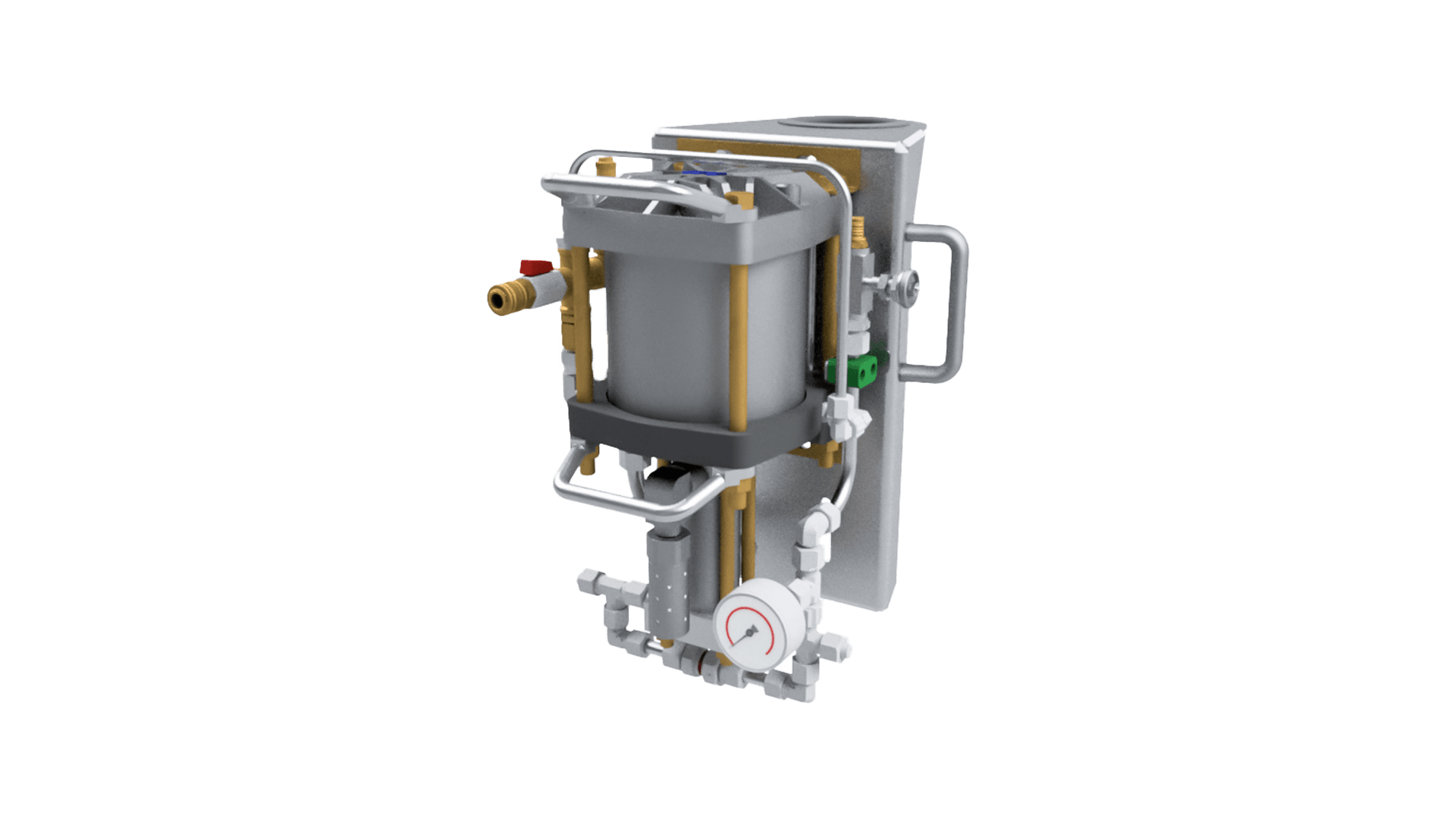
Test as a Service
We offer several pressure tests in various pressure ranges as a test service. Whether for research and development or serial production, please contact us with your testing requirements for a non-binding offer.
PRESSURE TEST BENCHES AND APPLICATIONS
PRECISE, REPEATABLE AND RELIABLE
As a specialist in pressure testing technology and state-of-the-art test rigs, Poppe + Potthoff Maschinenbau supports the development and production of particularly resilient components made of various materials – especially for automotive, shipbuilding and mechanical engineering as well as fluid and the medical industry. We offer individually designed test benches such as burst pressure test rigs, pressure cycle test benches, leak test systems, functional test rigs and autofrettage systems.
Contact Us
Our experienced technical sales team will help you with the implementation of your project and will find a solution tailored to your specifications and your requirements. We are represented internationally and can support you and your company worldwide. Our team has completed hundreds of projects many of which involved supporting test facilities with identical equipment. P+P Maschinenbau is your internationally trusted partner.
Using compressed air boosters to increase pressure at decentral endpoints allows for flexible and efficient performance enhancement of existing systems.




